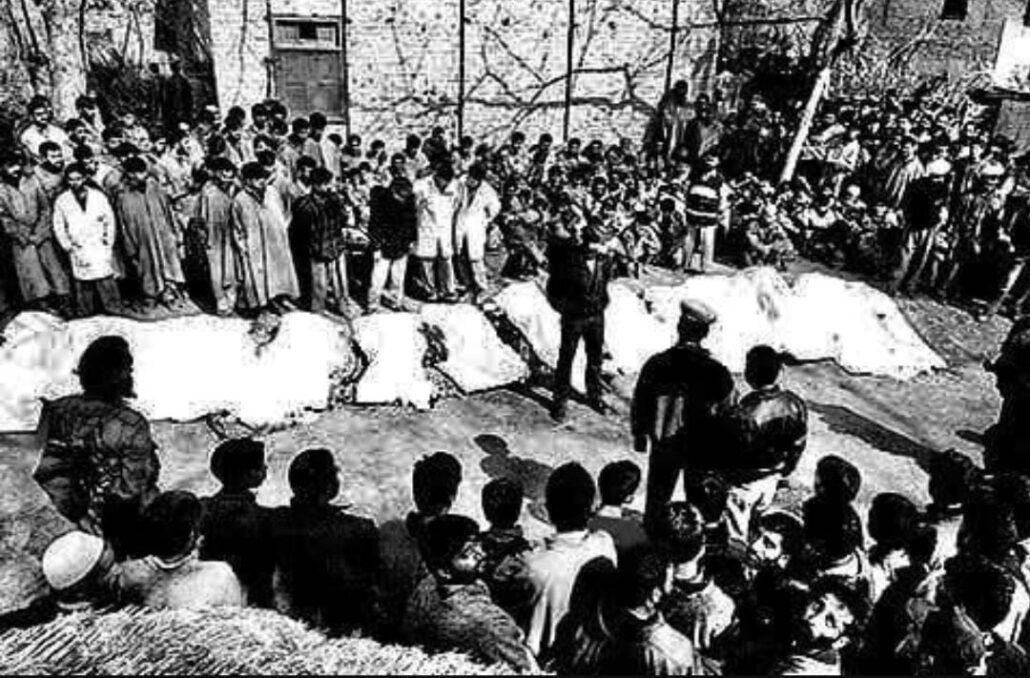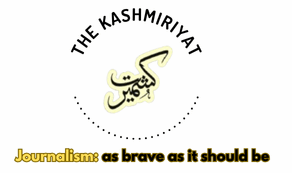
Prerna Bhat
As you visit Wandhama, a small village in Ganderbal, broken walls—once the proud homes of Kashmir’s minority Pandit community—now lie in ruins. These houses, once vibrant with life, now stand abandoned, their rooftops caved in, doors missing, and walls covered in cracks, bearing silent witness to a tragedy that forced an entire community to flee.
The remnants of these homes, overtaken by wild vegetation and decay, serve as grim reminders of the night of January 25, 1998, when 23 Kashmiri Pandits were brutally killed.
These houses bear the scars of a community that was forced to leave the village in the dead of night, leaving behind memories, belongings, and a way of life that would never return. The massacre, which took place on the eve of India’s Republic Day, was a turning point that further deepened the chasm between communities in Kashmir.
“It was the night of Shab (a holy night), and all the local Muslims were inside the mosque praying. Suddenly, we heard loud noises and saw that the house of a Kashmiri Pandit was on fire. They approached us for help, and we hid them in our houses. Some of them ran into an army camp,” recalled a local Muslim who witnessed the tragic events unfold.
Another villager, Ghulam Mohammad, described the chaos of that night. “What could we have done? We heard bullets from all sides and ran for our safety,” he said, his voice still heavy with the weight of that memory.
The Wandhama Massacre remains one of the darkest events in Kashmir’s recent history. On the night of January 25, 1998, 23 Kashmiri Pandits, including women and children, were brutally killed in the village of Wandhama, located in the Ganderbal district of Jammu Kashmir.
The attack, which took place on the eve of India’s Republic Day, shocked the nation and led to widespread condemnation.
According to reports, a group of armed militants, disguised as Indian Army personnel, entered the village late at night. They assured the local Pandit families that they were conducting a routine security check. Trusting their words, the residents—who had chosen to stay behind despite the large-scale migration of Kashmiri Pandits from the valley in the early 1990s—welcomed them into their homes.
Once inside, the gunmen opened fire indiscriminately, killing 23 people in cold blood. The victims included men, women, and children, with no one spared.
Eyewitness accounts and forensic reports indicated that the assailants used automatic rifles. The brutal nature of the killings suggested a clear intent to instill fear among the remaining members of the Kashmiri Pandit community.
After executing the massacre, the attackers set fire to several houses before fleeing. When security forces arrived the next morning, they found bodies lying in pools of blood and the village in devastation.
The massacre sparked outrage across the country, with political leaders and human rights organizations condemning the act.
Then-Prime Minister I.K. Gujral called it a heinous crime and assured strict action against the perpetrators. However, despite several investigations, no group was definitively held responsible for the attack. Various militant organizations were suspected, but no arrests were made.
The killings deepened the communal divide in Kashmir, already affected by years of insurgency and violence.
For the Kashmiri Pandit community, the incident reinforced fears of persecution and displacement. Many who had stayed behind despite the 1990 exodus decided to leave after the massacre, leading to a further decline in the Pandit population in the valley.
International human rights groups took note of the incident, highlighting the vulnerability of minorities in conflict zones.
The Indian government increased security measures for the remaining Pandit families in Kashmir, but the damage was already done. The Wandhama Massacre became a grim reminder of the ethnic and religious turmoil in the region.
To this day, the case remains unresolved, with no concrete action taken against those responsible.
Families of the victims continue to seek justice, but the passage of time has led to fading public memory.
The anniversary of the massacre is observed as a solemn reminder of the loss suffered by the Kashmiri Pandit community and the broader implications of militancy in Kashmir.
The author, Prerna Bhat, is pursuing Post graduation in Mass Communication.





